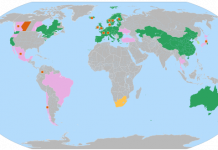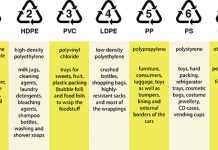by Tom Konrad, Ph.D.
Economics and Greenery, a Belated Rapprochement
It is truly a triumph of economic ways of thinking that many of environmental activists are championing market-based approaches to tackling climate change. Those people who are not for cap-and-trade on global warming gas emissions promote the even more economically rigorous carbon tax. The most common defense against criticisms of subsidies for renewable energy is to retort that the fossil fuel industry benefits from much large subsidies. Not only do fossil fuels get generous subsidies in direct and indirect payments, but they seldom pay anything like the indirect costs of the environmental harm they cause.
The simple and obvious conclusion that many environmentalists have drawn (and which I subscribed to only a few years ago), is that if we can just get the price signals right, people will start using renewable energy and stop building coal plants, and we’ll be able to live on this planet without destroying it for a few more centuries.
Classical Economics’ Dirty Secret
H.L. Mencken said, "For every human problem, there is a neat, simple solution; and it is always wrong."
Greens putting their faith in market orthodoxy are also likely to be unpleasantly surprised. The problem is that the classical economic dictum that if you raise the price of something, people will use less, and if you lower the price, people will use more, often fails outside the classroom. Humans often act against their economic self interest, often because doing so requires much less effort than not.
At the recent Energy Star Summit, I was speaking to an Energy Star employee whose job is to help people make more energy efficient choices. Even though he has the resources at his fingertips on a daily basis, he still has not made many of these cost effective changes in his own home. If he isn’t making changes he knows are cost effective, it’s no surprise that most people are doing even less, because most have the added step of lack of information about just what they should be doing and how to do it.
As an aside, I picked up a copy of Homeowner’s Handbook to Energy Efficiency after a chat with one of the authors, Chris Dorsi
, at the Summit. Like the Energy Star employee, I’m immersed in energy day in and day out, but while I have a theoretical understanding of the comparative advantages of electricity transmission and utility scale storage, that does not mean that I know how to install a Water Heater Blanket
, or how much I will save by doing so. This book gives a clear and concise description of how, and some idea of expected payback.
Other examples of price signals failing to move energy markets abound.
- Todd Litman, of the Victoria Transport Policy Institute, an economist and advocate of sustainable transportation policies, says that pricing schemes designed to get people out of cars are only effective when there are acceptable or appealing other transit options to get people to their destinations. If my commute by car to work goes up in price from $2 to $20, I’m only going to consider taking transit if transit is available and it will get me there reasonably comfortably. If my only option is a bus which I have to walk a mile to at either end, and the trip takes an hour longer than it would in my car, I’ll just pay the $20. I’ll also be mad at the people who I see as causing me the extra expense.
- The water heater blanket I referenced above costs about $20, and it will pay for itself in a year in a home with an older water heater.
Most energy efficiency improvements are manifestations of market failures. After all, classical economics demands that no investment be available which have very low risk and which return more than their cost of funds. Yet all of us have countless examples of such investments we can make, and the main "risk" to the return on an energy efficiency improvement are that energy prices fall, and the savings fall with them. The correlation of energy efficiency returns with a risk factor (energy prices) actually makes energy efficiency improvement more, not less attractive from the perspective of portfolio theory. Risk aversion would lead individuals to invest more, not less, in energy efficiency.
How Not to Cause a Backlash
If price signals are not enough, what is? On carbon pricing, I brought you ten insights last year, which I can sum up by saying that it’s not enough to just get the price right, you also have to make sure that the person paying the price has other acceptable choices. It does little good to tax the emissions of a newly build coal plant, since the plant owner will simply pay the tax and pass it on to his customers because his recent large investment would have to be abandoned otherwise. If the coal plant owner is a regulated utility, this will not even hurt profits, because the full cost of carbon will be passed on to the consumers.
The key to getting price signals right is exactly what Todd Litman recommends above for transit pricing. That is, in addition to a price signal, the payer also needs acceptable options which can be adopted by a casual consumer, without requiring significant sacrifices of time, effort, or comfort. This means that the information to make good energy decisions has to be readily available, and that reliable contractors or how-to books, be available at reasonable prices and without requiring extensive research on the part of the individual.
In terms of economics
, this can be seen as increasing the price-elasticity of demand. Price-elasticity of demand measures how much demand is able to fall for any given increase in price. If price elasticity is low, then demand does not fall, and consumers are likely to lash out, and demand that "someone" bring prices down, regardless of whether that someone has the ability to do so. Last summer, we saw this phenomenon in outrage at oil speculators, Big Oil, and calls for "Drill, Baby, Drill."
In the example of a carbon tax (or cap and trade) above, consumers need easy access to programs to help reduce their usage of more-expensive electricity, either through efficiency or renewable energy, or the result will again be a backlash against the carbon pricing scheme. People don’t like to see their bills go up. If they have an easy way to lower them, they will, but if lowing their bills is hard, they’ll find it much easier to get angry, and will put more effort into making the tax go away than into lowering their usage.
The economic crisis and a new administration have given us an opportunity to capture the benefits of clean energy. The Economist recently wrote why they thought a Green stimulus package would be a bad idea. The package they outlined, which was heave on subsidies for the most expensive forms of renewable energy, would have been a bad idea. Fortunately, the package which the President-Elect recently outlined is heavy on energy efficiency and electricity infrastructure, much like the response to the crisis I hoped for in early October.
The energy efficiency programs in the stimulus not only will be good for the economy, but they will also help cushion the blow when we finally have a country-wide cap-and-trade for carbon emissions. Giving people the tools they need to reduce their energy bills will give consumers an opportunity to respond to the new price signals productively, rather than with anger.
We’re lucky to finally have leaders who opt for the more complex solution which has a chance of being right, rather than the neat, simple solution, which is always wrong. But we can’t assume that once we get the price right everything will follow. Getting the price right is just the beginning; helping people adjust to the new prices will be a long, uphill battle. If we’re not prepared, we may find that we’ve lost ground, not gained it.






Wonderful, stuff Tom. Thanks for what you are doing! As citizens, we all need to encourage Obama and our other representatives on this.
We received the following email in response to this article:
I am confused that everyone is claiming that there’s a carbon problem. I do understand that it makes sense to tread lightly on this planet, and that we should all try to be good stewards of the Earth. But I wish someone could explain why the average temperature of the Earth has NOT increased in the last 80 years, even though CO2 continues to increase. Additionally, NASA imagery over a ten year period shows the highest amount of CO2 concentration was over the Northern hemisphere – mostly within the arctic circle in 2006-2007, and yet temperatures actually dropped and ice mass increased over the same period within the arctic circle!
Please help! I don’t get it.
I can’t comment on the information you put forth in your note since you didn’t provide references for it. At any rate, my ability to make a meaningful contribution to the scientific debate on climate change is limited since my own training is in economics, public policy and finance.
If I wanted to know where global scientific consensus on the matter stood, I would go with the IPCC (http://www.ipcc.ch/index.htm). There are a wealth of reports on the website with ample scientific information that you may find of interest.
All the evidence I see points to the fact that the world is warming. It is still possible to pick out some data which might imply otherwise, but it has to come from selective picking and choosing.
In the end, you will choose to believe whom you want to believe… I see my role as helping people who already understand the problem to do something about it. The IPCC is an excellent resource, and one of many. At this point, depending on where you live, it’s possible to see the effects with your own eyes.
For the exhaustive case about global warming, siee Climate Progress